Abstract
Monoclonal antibodies were produced using mice immunized with the human promyeloid cell line HL60. Two antibodies are described which identify antigens selectively expressed by myeloid cells. Studies using normal bone marrow and myeloid leukaemia cells demonstrated that one of these antibodies (AGF4.48) identifies an antigen expressed throughout the promyeloid to neutrophil stages of maturation. In contrast, the second antibody (AGF4.36) identifies an antigen expressed at the promyeloid to metamyeloid stages and is absent from most blood neutrophils. The HL60 line can be induced to differentiate into neutrophils by 1 . 25% dimethylsulphoxide (DMSO) (Collins et al., 1978). Variant lines from HL60, unresponsive to 1 . 25% DMSO, lack the 'transient' myeloid antigen (AGF4.36) and show a reduced expression of the myeloid antigen (AGF4.48). The variant lines can be induced to mature using higher DMSO concentrations (1 . 5-1 . 75%) and do not express the 'transient' antigen (AGF4.36) during their maturation. The use of these lines in studies of myelopoiesis is discussed.
Full text
PDF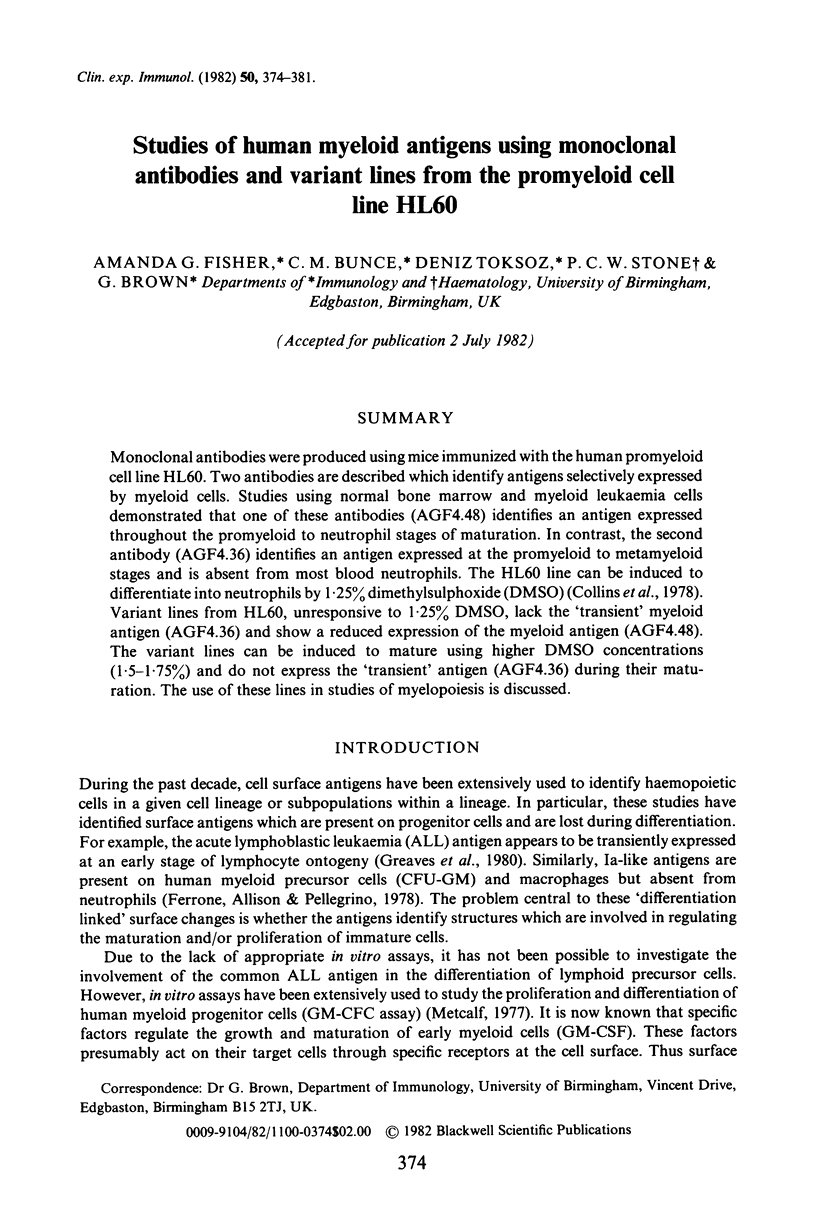
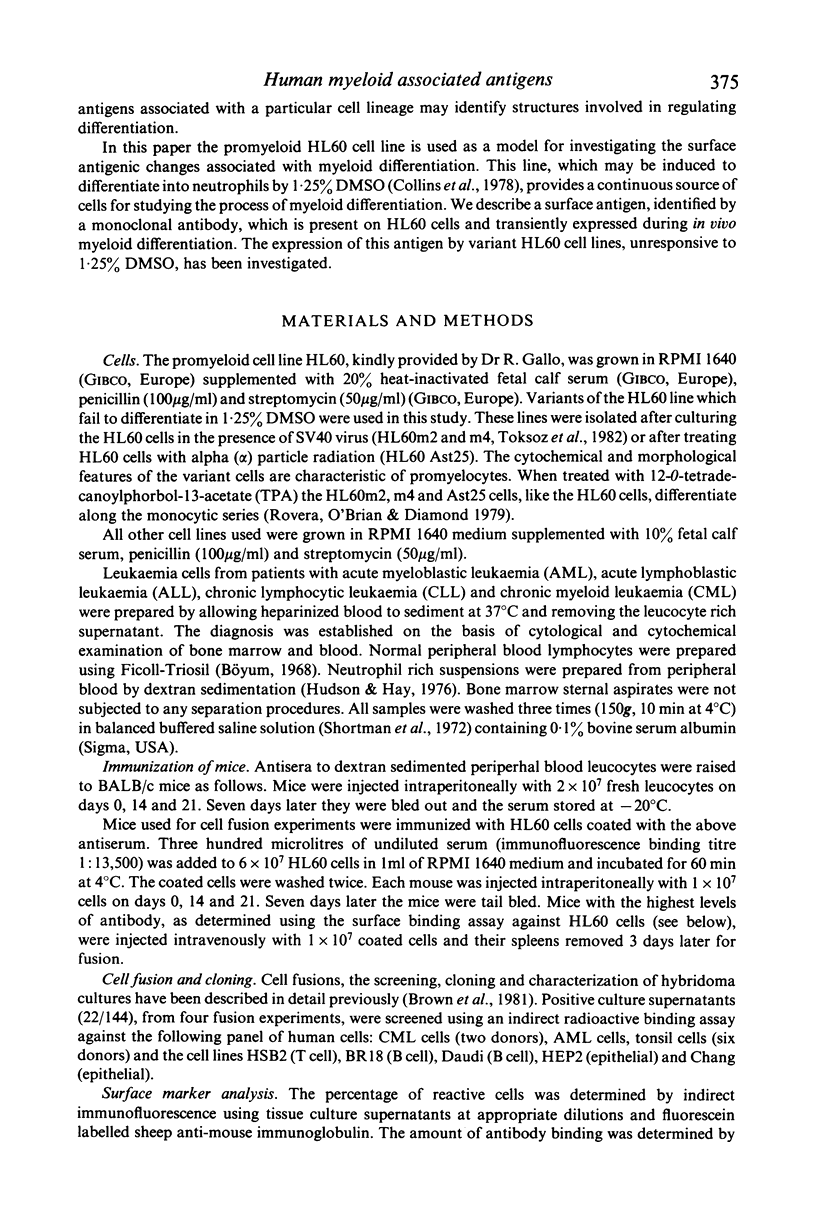
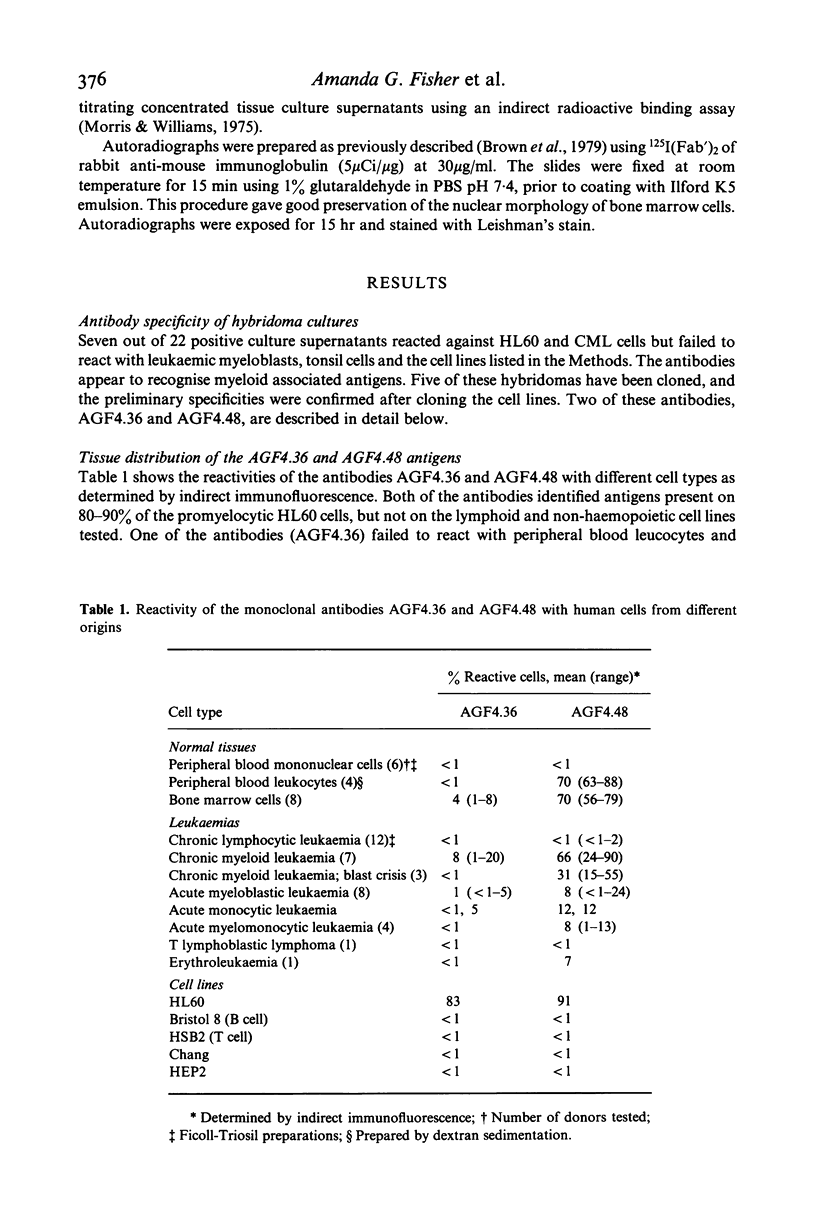


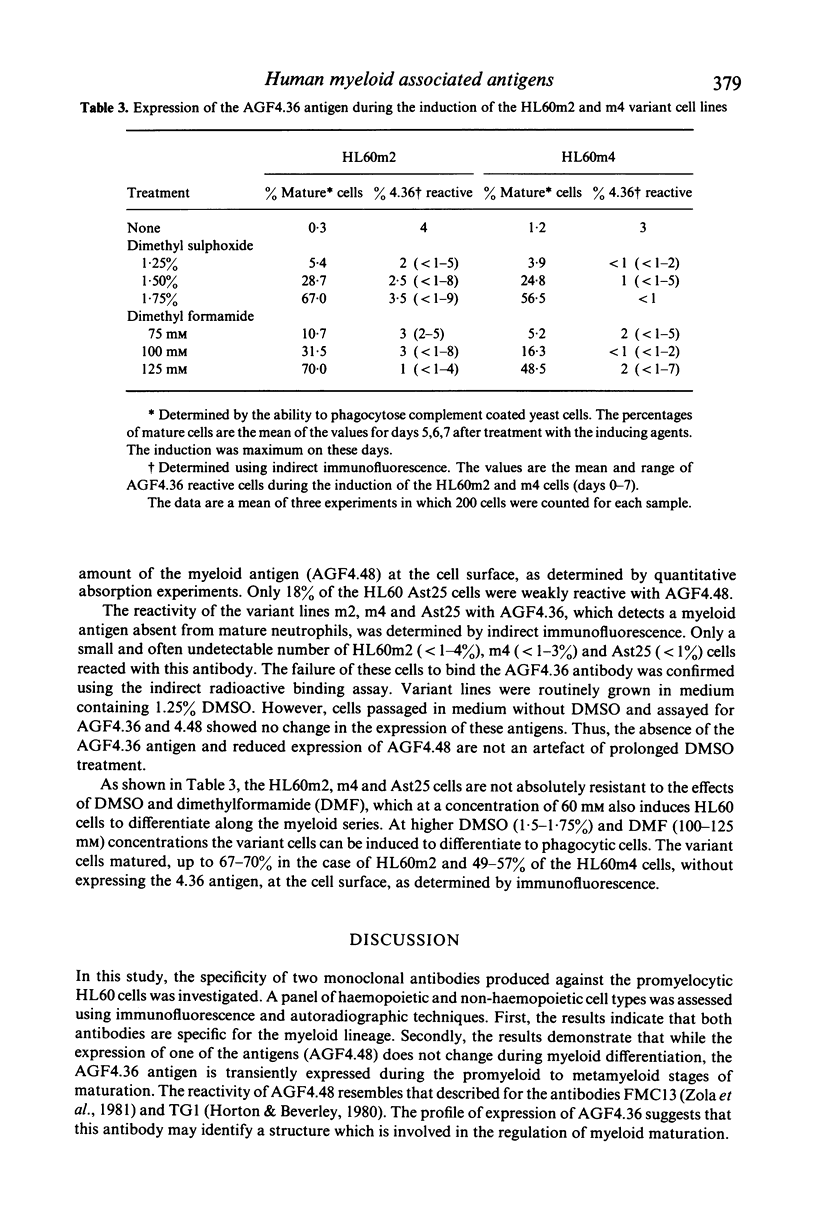
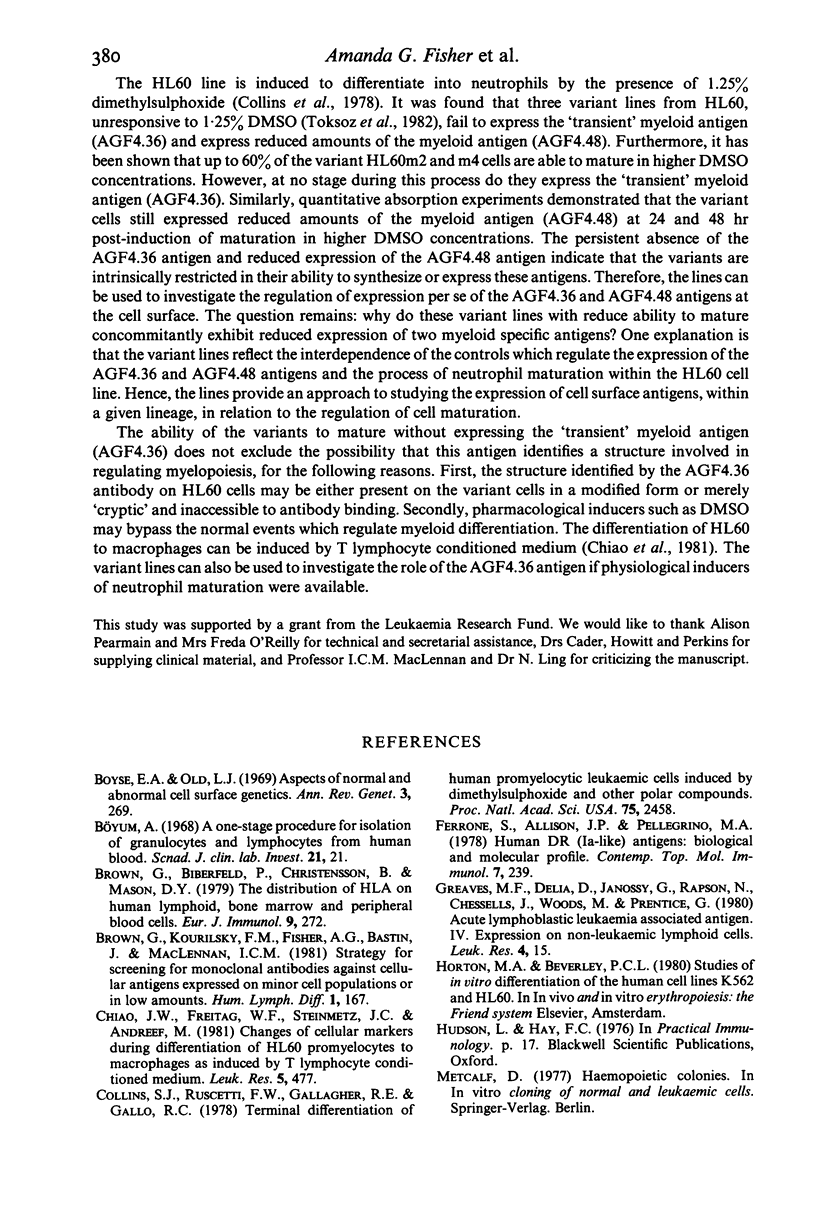

Selected References
These references are in PubMed. This may not be the complete list of references from this article.
- Brown G., Biberfeld P., Christensson B., Mason D. Y. The distribution of HLA on human lymphoid, bone marrow and peripheral blood cells. Eur J Immunol. 1979 Apr;9(4):272–275. doi: 10.1002/eji.1830090405. [DOI] [PubMed] [Google Scholar]
- Chiao J. W., Freitag W. F., Steinmetz J. C., Andreeff M. Changes of cellular markers during differentiation of HL-60 promyelocytes to macrophages as induced by T lymphocyte conditioned medium. Leuk Res. 1981;5(6):477–489. doi: 10.1016/0145-2126(81)90118-1. [DOI] [PubMed] [Google Scholar]
- Collins S. J., Ruscetti F. W., Gallagher R. E., Gallo R. C. Terminal differentiation of human promyelocytic leukemia cells induced by dimethyl sulfoxide and other polar compounds. Proc Natl Acad Sci U S A. 1978 May;75(5):2458–2462. doi: 10.1073/pnas.75.5.2458. [DOI] [PMC free article] [PubMed] [Google Scholar]
- Ferrone S., Allison J. P., Pellegrino M. A. Human DR (Ia-like) antigens: biological and molecular profile. Contemp Top Mol Immunol. 1978;7:239–281. doi: 10.1007/978-1-4757-0779-3_8. [DOI] [PubMed] [Google Scholar]
- Greaves M., Delia D., Janossy G., Rapson N., Chessells J., Woods M., Prentice G. Acute lymphoblastic leukaemia associated antigen. IV. Expression on non-leukaemic 'lymphoid' cells. Leuk Res. 1980;4(1):15–32. doi: 10.1016/0145-2126(80)90044-2. [DOI] [PubMed] [Google Scholar]
- Morris R. J., Williams A. F. Antigens on mouse and rat lymphocytes recognized by rabbit antiserum against rat brain: the quantitative analysis of a xenogeneic antiserum. Eur J Immunol. 1975 Apr;5(4):274–281. doi: 10.1002/eji.1830050412. [DOI] [PubMed] [Google Scholar]
- Rovera G., O'Brien T. G., Diamond L. Induction of differentiation in human promyelocytic leukemia cells by tumor promoters. Science. 1979 May 25;204(4395):868–870. doi: 10.1126/science.286421. [DOI] [PubMed] [Google Scholar]
- Shortman K., Williams N., Adams P. The separation of different cell classes from lymphoid organs. V. Simple procedures for the removal of cell debris. Damaged cells and erythroid cells from lymphoid cell suspensions. J Immunol Methods. 1972 May;1(3):273–287. doi: 10.1016/0022-1759(72)90005-1. [DOI] [PubMed] [Google Scholar]
- Williams A. F., Galfrè G., Milstein C. Analysis of cell surfaces by xenogeneic myeloma-hybrid antibodies: differentiation antigens of rat lymphocytes. Cell. 1977 Nov;12(3):663–673. doi: 10.1016/0092-8674(77)90266-5. [DOI] [PubMed] [Google Scholar]
- Zola H., McNamara P., Thomas M., Smart I. J., Bradley J. The preparation and properties of monoclonal antibodies against human granulocyte membrane antigens. Br J Haematol. 1981 Jul;48(3):481–490. doi: 10.1111/j.1365-2141.1981.tb02740.x. [DOI] [PubMed] [Google Scholar]


